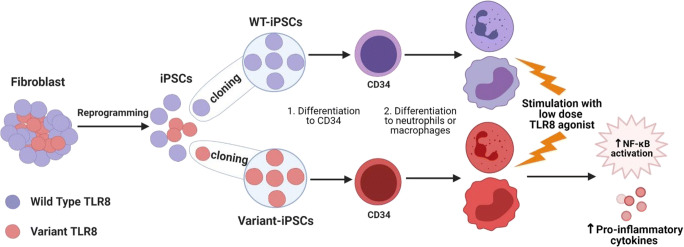Fig. 2.
Application of patient-specific induced pluripotent stem cells (iPSCs) for functional analysis of TLR8 mosaic variants. Cultured skin fibroblasts derived from patients with mosaic TLR8 variants were reprogrammed into induced pluripotent stem cells (iPSCs), which were single cell cloned to generate clonal iPSC lines with wild type (WT) or TLR8 variant. These clones were differentiated into neutrophils or macrophages and tested for their response to high or low doses of TLR8 stimulation [41]. There was no difference in response to stimulation with a high-dose of TLR8 ligand. Upon stimulation with a low-dose of TLR8 ligand, cells derived from patient-specific iPSC with the TLR8 variant had increased phosphorylation of NF-κB, and produced high amounts of pro-inflammatory cytokines, as compared to WT iPSC-derived cells, demonstrating a gain-of-function (GOF) phenotype in patient-derived cells. Figure created using Biorender (https://biorender.com/)

